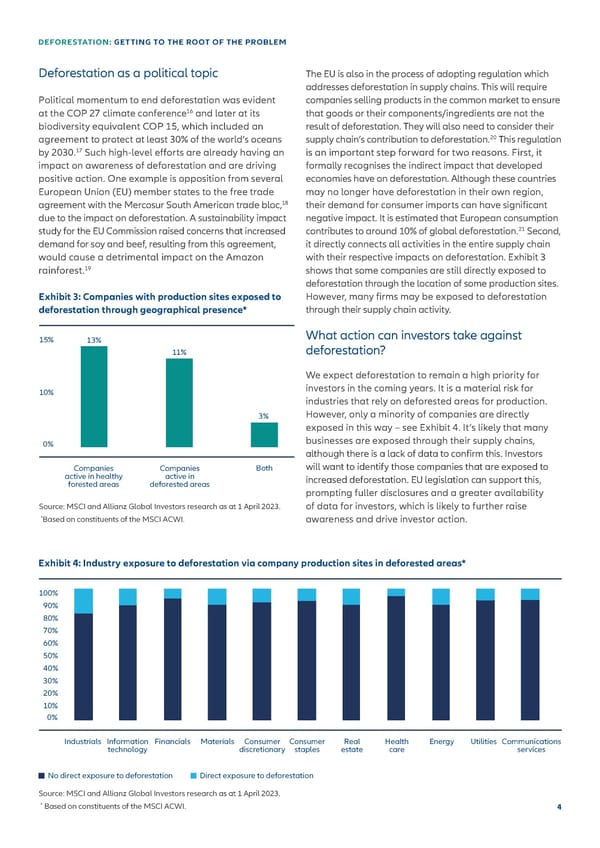DEFORESTATION: GETTING TO THE ROOT OF THE PROBLEM Deforestation as a political topic The EU is also in the process of adopting regulation which addresses deforestation in supply chains. This will require Political momentum to end deforestation was evident companies selling products in the common market to ensure 16 at the COP 27 climate conference and later at its that goods or their components/ingredients are not the biodiversity equivalent COP 15, which included an result of deforestation. They will also need to consider their 20 agreement to protect at least 30% of the world’s oceans supply chain’s contribution to deforestation. This regulation by 2030.17 Such high-level e昀昀orts are already having an is an important step forward for two reasons. First, it impact on awareness of deforestation and are driving formally recognises the indirect impact that developed positive action. One example is opposition from several economies have on deforestation. Although these countries European Union (EU) member states to the free trade may no longer have deforestation in their own region, 18 agreement with the Mercosur South American trade bloc, their demand for consumer imports can have signi昀椀cant due to the impact on deforestation. A sustainability impact negative impact. It is estimated that European consumption study for the EU Commission raised concerns that increased contributes to around 10% of global deforestation.21 Second, demand for soy and beef, resulting from this agreement, it directly connects all activities in the entire supply chain would cause a detrimental impact on the Amazon with their respective impacts on deforestation. Exhibit 3 19 rainforest. shows that some companies are still directly exposed to deforestation through the location of some production sites. Exhibit 3: Companies with production sites exposed to However, many 昀椀rms may be exposed to deforestation deforestation through geographical presence* through their supply chain activity. 15% 13% What action can investors take against 11% deforestation? We expect deforestation to remain a high priority for 10% investors in the coming years. It is a material risk for industries that rely on deforested areas for production. 3% However, only a minority of companies are directly exposed in this way – see Exhibit 4. It’s likely that many 0% businesses are exposed through their supply chains, although there is a lack of data to con昀椀rm this. Investors Companies Companies Both will want to identify those companies that are exposed to active in healthy active in increased deforestation. EU legislation can support this, forested areas deforested areas prompting fuller disclosures and a greater availability Source: MSCI and Allianz Global Investors research as at 1 April 2023. of data for investors, which is likely to further raise * Based on constituents of the MSCI ACWI. awareness and drive investor action. Exhibit 4: Industry exposure to deforestation via company production sites in deforested areas* 100% 90% 80% 70% 60% 50% 40% 30% 20% 10% 0% Industrials Information Financials Materials Consumer Consumer Real Health Energy Utilities Communications technology discretionary staples estate care services No direct exposure to deforestation Direct exposure to deforestation Source: MSCI and Allianz Global Investors research as at 1 April 2023. * Based on constituents of the MSCI ACWI. 4
 Deforestation Page 3 Page 5
Deforestation Page 3 Page 5